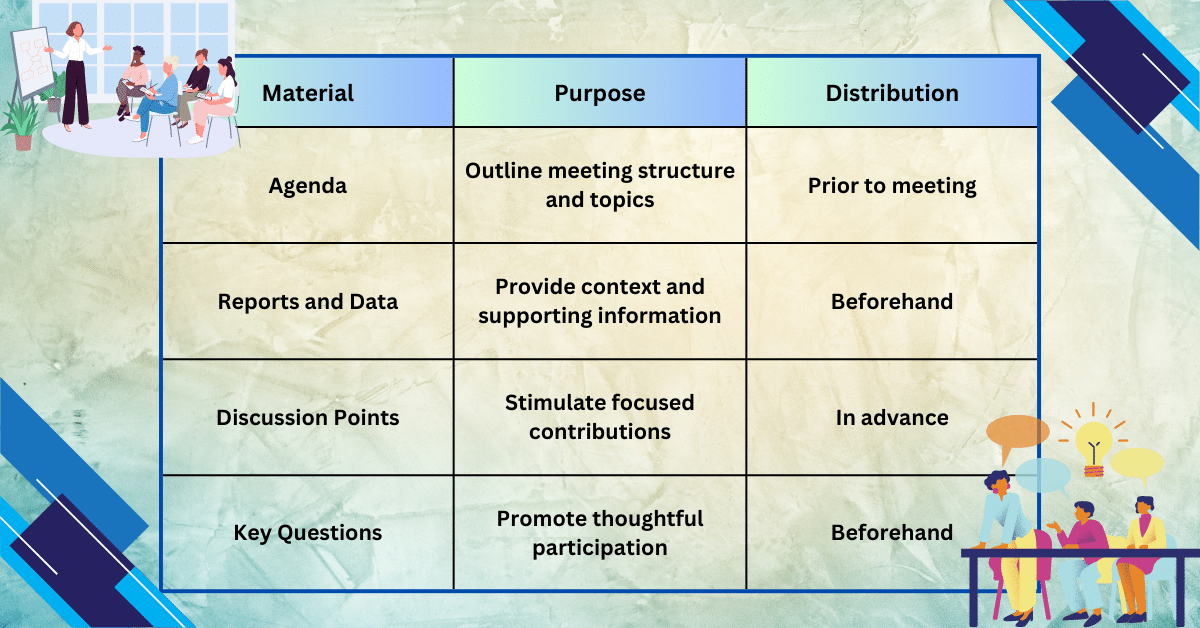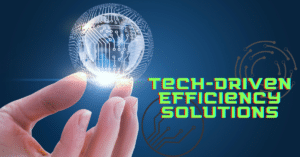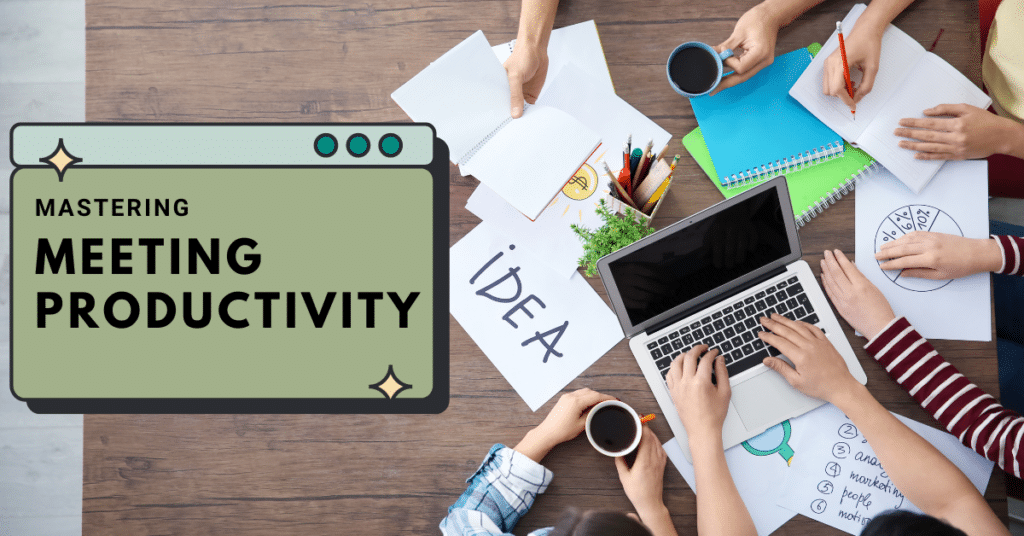In the fast-paced landscape of modern work, where time is of the essence and productivity is paramount, mastering the art of efficient meetings has become a cornerstone of success. Every minute spent in a meeting should contribute meaningfully to the overarching goals of a project or organization. It’s not just about assembling in a room or a virtual space; it’s about streamlining every aspect of the meeting process to ensure that each moment counts. This guide delves into the key strategies and practices that can transform your meetings from time-consuming obligations into powerful tools for progress. From crafting clear and concise meeting objectives to measuring meeting success through vital metrics, this exploration will help you harness the true potential of your meeting sessions.

Streamlining Agenda Creation: Crafting Clear and Concise Meeting Objectives

Crafting clear and concise meeting objectives is the cornerstone of effective agenda creation. In a world where time is a precious commodity, a well-defined agenda sets the tone for a productive meeting. By articulating specific goals and outcomes, participants can align their focus, preparation, and contributions. An agenda devoid of ambiguity serves as a roadmap, guiding discussions toward meaningful conclusions. In this section, we will explore the art of formulating precise meeting objectives that not only enhance productivity but also establish a sense of purpose and direction for every gathering.
Effective Time Management: Maximizing Productivity Through Efficient Meeting Scheduling
In the realm of business efficiency, time management reigns supreme. When it comes to meetings, this principle holds even greater significance. Efficient meeting scheduling involves a delicate balance between allocating time for discussions and ensuring participants have ample time for focused work. By strategically spacing meetings, considering time zones, and setting appropriate durations, you can unlock a new level of productivity. This section delves into the strategies and tools that enable you to optimize meeting schedules, allowing participants to engage fully, contribute meaningfully, and still have the space they need to tackle their responsibilities.

Strategic Time Slot Selection: Aligning Meetings with Peak Cognitive Performance
Choosing the right time slots for your meetings can significantly impact participants’ cognitive engagement and overall productivity. Research indicates that individuals have peak performance and concentration periods throughout the day. By aligning meetings with these optimal periods, you can ensure that participants are mentally sharp and attentive, fostering more meaningful interactions and efficient decision-making. Consider these key points when selecting strategic time slots:
- Identify peak cognitive hours based on individual or team preferences.
- Schedule critical discussions during these periods to leverage heightened focus.
- Avoid scheduling meetings during common energy slumps, such as immediately after lunch.
Time Zone Considerations: Bridging Global Teams for Seamless Scheduling
In today’s interconnected world, collaborating with global teams is increasingly common. However, navigating different time zones can be a logistical challenge. Effective meeting scheduling across time zones requires careful planning and consideration to ensure that no team member is disproportionately burdened. Here’s how you can manage time zone differences:
- Implement a shared time zone tool to simplify scheduling across regions.
- Rotate meeting times to distribute the inconvenience of early or late meetings.
- Prioritize asynchronous communication and recording for inclusivity.
Agenda-driven Time Allocation: Structuring Meetings for Focused Discussions and Actionable Outcomes
Efficient meeting scheduling involves not only choosing the right time but also managing time effectively during the meeting itself. An agenda-driven approach to time allocation ensures that discussions stay on track, topics are adequately covered, and participants leave with actionable takeaways. Here are steps to structure your meetings for focused discussions and optimal outcomes:
- Divide the agenda into time blocks for each topic or discussion point.
- Allocate more time for complex or strategic topics, and less time for routine updates.
- Use time limits for each agenda item to encourage concise contributions.
- Incorporate buffer time to address unexpected discussions or wrap-ups.
Sample Table: Meeting Time Slot Options

Utilizing these strategies and considerations will help you master the art of effective time management in meeting scheduling, leading to higher engagement, enhanced collaboration, and ultimately, greater productivity.
Inclusive Participation: Fostering Engagement and Input from All Attendees
In the landscape of effective meetings, the concept of inclusive participation stands as a pivotal pillar, essential for propelling discussions from mere gatherings to dynamic collaborative sessions. Beyond the conventional roles of speakers and listeners, inclusive participation beckons every attendee to step into the spotlight of contribution. This approach embraces diverse perspectives, unlocking a reservoir of creativity and knowledge that enriches the discourse. Nurturing an environment of welcome and respect amplifies the potential for groundbreaking insights and innovative solutions. This section unveils strategies to cultivate an all-inclusive meeting ethos, transforming passive attendees into active co-creators, and fostering collaborative atmospheres that drive meeting success to new heights.
Preparation is Key: How Proper Meeting Prep Enhances Productivity
The foundation of a productive meeting lies in the meticulous preparation that precedes it. Effective meetings don’t happen by chance; they are the result of planning and thorough groundwork. Proper meeting preparation ensures that participants enter the discussion armed with the necessary information, context, and objectives. This proactive approach streamlines discussions, minimizes tangents, and maximizes the value extracted from each minute spent together. In this section, we explore the transformative impact of preparation on meeting outcomes, offering actionable insights and techniques to elevate your meeting preparation process. From assembling pre-meeting materials to setting clear expectations, you’ll discover how investing time in preparation paves the way for more focused, efficient, and impactful meetings.

Creating Comprehensive Pre-Meeting Materials: Equipping Attendees for Informed Discussions
Incorporating comprehensive pre-meeting materials is a strategic move that empowers attendees with the information they need to contribute meaningfully. These materials serve as a preparatory toolkit, ensuring that participants enter the meeting well-versed and ready to engage. Consider the following approaches when crafting pre-meeting materials:
- Compile relevant documents, reports, and data points that will be discussed.
- Provide a concise summary of the meeting’s objectives, ensuring alignment.
- Include a list of key questions or points for discussion to stimulate active participation.
Setting Clear Objectives and Expectations: Guiding Productive Conversations with Purposeful Intent
Clear objectives and expectations act as navigational beacons, guiding discussions toward productive outcomes. When participants understand the intended results of a meeting, they can channel their contributions effectively and prioritize relevant insights. Here’s how you can set the stage for productive conversations through explicit objectives and expectations:
- Set specific meeting goals, outlining the required achievements.
- Convey the desired outcomes and potential decisions for communication.
- Encourage attendees to prepare their contributions in line with the established objectives.
Sample Table: Pre-Meeting Materials Checklist

Integrating these practices into your meeting preparation routine transforms the session into a purposeful exchange, where attendees are well-equipped to contribute substantively and collaboratively. As the pre-meeting stage evolves from a mere formality to a strategic advantage, the resulting discussions gain depth, direction, and a heightened potential for driving impactful outcomes.
Metrics that Matter: Measuring Meeting Success and Adjusting for Optimal Productivity
In the dynamic landscape of efficient meetings, a crucial aspect often overlooked is the realm of meeting metrics – a realm where insights meet quantifiable results. Beyond the meeting’s immediate interactions lies a goldmine of data waiting to be harnessed. Establishing meaningful metrics launches a path of continuous improvement, enabling you to assess meeting impact. Attendance rates and participation levels gauge engagement, while discussions translating into actionable takeaways measure meeting efficacy. This section explores metrics shedding light on past performance and guiding future productivity. Armed with data, refine strategy, optimize resources, and transform meetings into investments in meaningful outcomes.
Conclusion

In today’s competitive environment, optimizing meetings for productivity has never been more crucial. The journey begins with the essential step of streamlining agenda creation, ensuring that each meeting has a well-defined purpose that aligns with broader objectives. Effective time management follows suit, allowing for maximum productivity through efficient meeting scheduling that respects participants’ time. However, true success is achieved by fostering inclusive participation, where every attendee’s input is valued and sought, creating a dynamic and collaborative atmosphere. Prioritizing preparation paves the way for productive discussions, emphasizing how adequate groundwork enhances the quality of meeting outcomes. Lastly, the significance of measuring meeting success using relevant metrics cannot be overstated. By continuously assessing the impact of meetings and making necessary adjustments, you pave the path toward optimal productivity and meaningful progress.













